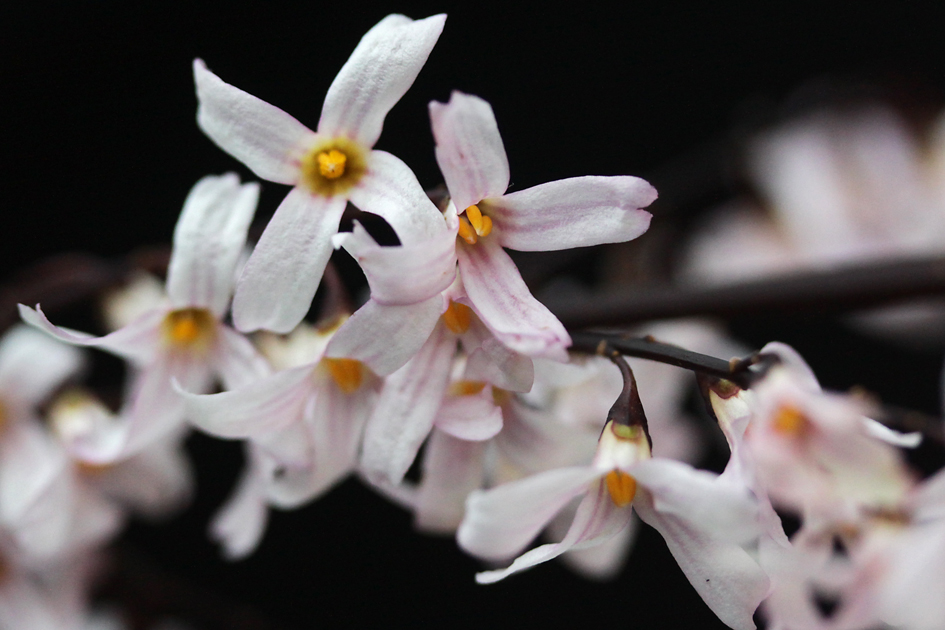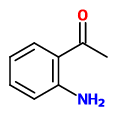Benutzer-Werkzeuge
Abeliophyllum distichum Nakai - Oleaceae - white forsythia, Weiße Forsythie, Schneeforsythie
Endangered deciduous shrub, up to 1.50m high, native to Korea, cultivated as ornamental.
„It is grown primarily for its very early, often profuse, spring bloom which consists of dense axillary clusters of white (sometimes with a pink tinge), 4-petaled, slightly fragrant flowers which open from purple buds in late March and cover the naked stems before the leaves unfold. Bloom slightly precedes related true forsythias. After bloom, the medium green foliage is generally unremarkable and produces little if any fall color.“
http://www.missouribotanicalgarden.org/PlantFinder/PlantFinderDetails.aspx?kempercode=r300
The flowers own a highly characteristic scent very much dominated by 2-aminobenzaldehyde (18.5%). Other major components are e.g. 2-phenylethanol (33.0%), 1H-indole (5.5%), and benzaldehyde (4.3%). Minor but olfactorly important compounds are methyl anthranilate (0.2%) and the high-impact odorant 2-aminoacetophenone (0.1%), which is important to the scent of chestnut honey and the flower scents of Smilax aspera and Prunus armeniaca L.
[Scent of a vanishing flora, Roman Kaiser, 2011, 20-21, 299]

Abeliophyllum distichum, Alfred Osterloh (2012), CC BY-SA 3.0 Hortipedia Commons





